Home> Technical Articles> Unveiling Precision: Needle Roller and Cage Assemblies in Industrial Machinery
- AddressNo.1875 East Changjiang Road, New District, Wuxi, Jiangsu,China
- Factory AddressNo.1875 East Changjiang Road, New District, Wuxi, Jiangsu, China
- Worktime9:00-18:00
- Phone(Working Time)86-510-85310167
Needle roller and cage assemblies are the unsung heroes of industrial machinery, quietly performing a vital role in various applications. These unassuming components play a crucial part in maintaining precision and efficiency across industries. In this exploration, we delve into the world of needle roller and cage assemblies, shedding light on their significance and the myriad advantages they offer.
Industrial machinery relies on precision for seamless operation, and needle roller and cage assemblies are at the forefront of achieving this goal. These unassuming components might be small in size, but their impact is monumental. Let's embark on a journey to uncover the intricacies and benefits of needle roller and cage assemblies in the realm of industrial machinery.

Design and Construction
Design Principles
Needle roller and cage assemblies are a testament to precision engineering. Their design is driven by the need to balance strength, durability, and efficiency. Engineers meticulously calculate the size and arrangement of needles within the cage, ensuring optimal load distribution and reduced friction. The design principles prioritize the following key aspects:
Load-Bearing Capacity
The primary function of needle roller and cage assemblies is to bear radial loads while occupying minimal space. This requires a delicate balance between the size and quantity of needles. We'll explore how these components achieve impressive load-bearing capabilities without compromising on size.
Reduced Friction
Friction is the enemy of efficiency in machinery. Needle roller and cage assemblies are designed to minimize friction between the needles and the raceway, allowing for smooth and efficient operation. We'll discuss the strategies employed to achieve this crucial aspect of their design.
Space Efficiency
In industrial machinery, space is often at a premium. Needle roller and cage assemblies are engineered to provide excellent load-bearing capacity within a compact form factor. Their design allows machinery to maintain a small footprint while delivering exceptional performance.
Components of Needle Roller and Cage Assemblies
Understanding the inner workings of these assemblies requires a closer look at their components. Let's explore the key elements that make up a needle roller and cage assembly:
|
Cage
|
The cage is the backbone of the assembly, providing structural integrity and guiding the movement of the needles. We will examine the materials used for cages, such as steel, plastic, or brass, and their impact on performance. |
|
Needles |
The needles are the load-bearing heroes of the assembly. These cylindrical, precision-engineered components distribute the load evenly and reduce friction. We'll discuss the materials, shapes, and arrangements of needles and their importance in achieving optimal performance. |
|
Raceway |
The raceway provides a smooth and precisely machined surface for the needles to glide on. We'll delve into the manufacturing techniques that create the ideal raceway, ensuring minimal wear and tear over time. |
Variations and Types
The world of needle roller and cage assemblies is diverse, with various types and variations available to suit different applications. We'll explore these variations, including:
- Single-row assemblies
- Double-row assemblies
- Thrust needle roller and cage assemblies
- Combined needle roller and cage assemblies
Understanding the different types allows industries to select the most suitable assembly for their specific machinery needs.
Applications Across Industries
we will explore the diverse range of industries that heavily depend on needle roller and cage assemblies for the efficient functioning of their machinery. These remarkable components find applications in a wide array of fields, enhancing the performance and precision of various types of equipment.
Automotive Industry
The automotive sector is a prime example of an industry that relies extensively on needle roller and cage assemblies. From transmissions to engines and even suspension systems, these assemblies contribute to the smooth and reliable operation of vehicles. Their ability to handle heavy loads and high-speed rotations makes them indispensable in this demanding industry.
Aerospace and Aviation
In the aerospace and aviation sector, where safety and precision are paramount, needle roller and cage assemblies play a critical role. These assemblies are used in aircraft engines, landing gear systems, and control mechanisms. Their lightweight yet robust design is perfectly suited for applications where every gram matters.
Industrial Machinery
In the realm of industrial machinery, the applications of needle roller and cage assemblies are incredibly diverse. They can be found in conveyor systems, packaging machinery, printing presses, and various manufacturing equipment. Their versatility and load-bearing capacity make them a favorite choice among engineers and manufacturers.
Construction and Heavy Equipment
Construction machinery and heavy equipment face extreme conditions and heavy loads daily. Needle roller and cage assemblies are utilized in excavators, cranes, and bulldozers to ensure reliable and efficient performance under challenging circumstances. Their ability to handle heavy shock loads makes them indispensable in this field.
Renewable Energy
The renewable energy sector, including wind turbines and solar tracking systems, relies on needle roller and cage assemblies to harness clean energy efficiently. These assemblies enable precise movement and positioning, contributing to the overall effectiveness and longevity of renewable energy infrastructure.
Medical Devices
Even in the field of medicine, needle roller and cage assemblies find applications in devices like medical pumps and robotic surgery systems. Their precision and smooth operation are crucial in delivering accurate medical treatments and improving patient outcomes.
Other Industries
The applications of needle roller and cage assemblies are not limited to the sectors mentioned above. They are also employed in textile machinery, agricultural equipment, and food processing machinery, among others.
As we explore these various industries, it becomes evident that needle roller and cage assemblies are versatile components that enable the reliable and precise operation of machinery across diverse fields. Their role in enhancing equipment performance and longevity is truly invaluable.
Installation and Maintenance
we will dive into the crucial aspects of installing and maintaining needle roller and cage assemblies to ensure optimal performance and longevity in industrial machinery.
Step-by-Step Installation Guide
Proper installation is paramount when it comes to needle roller and cage assemblies. Here, we provide a step-by-step guide to assist you in this process:
Pre-Installation Inspection
Before you begin, carefully inspect the components, ensuring that they are free from any damage or contaminants. Check the needles, cage, and raceway for any signs of wear or defects.
Aligning the Components
Precise alignment is essential for the smooth operation of needle roller and cage assemblies. Ensure that the bearings are correctly aligned with the shaft and housing to prevent uneven load distribution.
Torque Specifications
Refer to the manufacturer's specifications for the correct torque values during assembly. Over-tightening or under-tightening can lead to premature wear and reduced performance.
Lubrication
Proper lubrication is vital for reducing friction and wear. Use the recommended lubricant and apply it evenly to all contact surfaces. Regularly check and replenish the lubrication to maintain optimal performance.
Best Practices for Maintenance
Maintenance plays a pivotal role in extending the lifespan of needle roller and cage assemblies. Here are some best practices:
Regular Inspections
Implement a schedule for routine inspections to identify any signs of wear, misalignment, or damage. This proactive approach allows you to address issues before they become critical.
Lubrication Management
Monitor the lubrication condition and ensure it remains at the appropriate level. Lubrication intervals should be in accordance with the manufacturer's recommendations.
Cleaning Procedures
Regularly clean the components to remove contaminants like dirt, dust, and debris. Contaminants can accelerate wear and reduce performance.
Wear and Tear
Keep an eye out for any indications of wear or damage, such as unusual noises, vibrations, or changes in performance. Address these issues promptly to prevent further damage.
Strategies for Addressing Wear and Tear
Despite proper maintenance, wear and tear may occur over time. Here are strategies for dealing with these issues:
|
Replacement Parts |
In cases where components show significant wear or damage, it is advisable to replace them with genuine parts from the manufacturer to ensure compatibility and performance. |
|
Realignment |
If misalignment is detected, re-align the needle roller and cage assemblies to distribute the load evenly and restore optimal operation. |
|
Professional Service |
For complex maintenance or issues that require specialized knowledge, consider seeking the assistance of a professional technician or the manufacturer's service team. |
By following these installation and maintenance guidelines, you can maximize the precision and efficiency of needle roller and cage assemblies in your industrial machinery. Regular upkeep ensures the reliable performance of these crucial components, ultimately contributing to the success and longevity of your equipment.
Advantages and Limitations
we delve into the advantages and limitations of utilizing needle roller and cage assemblies in industrial machinery. These components offer unique benefits, but they also come with certain considerations that users should be aware of.
Advantages of Needle Roller and Cage Assemblies
High Load-Carrying Capacity
One of the primary advantages of needle roller and cage assemblies is their exceptional load-carrying capacity. The design, which incorporates closely spaced needle rollers, allows for efficient load distribution. This feature makes them suitable for applications where heavy radial loads need to be supported.
Compact Design
Needle roller and cage assemblies are known for their compact and lightweight design. This compactness is advantageous in applications with limited space, as it allows for the installation of bearings in tight areas without compromising performance.
High Radial Stiffness
These assemblies exhibit high radial stiffness, which means they can resist deformation and deflection under heavy loads. This characteristic is particularly beneficial in applications requiring precise positioning and minimal deflection, such as machine tool spindles.
Reduced Friction
The design of needle rollers reduces contact surface area, resulting in lower friction compared to other bearing types. Reduced friction contributes to energy efficiency and minimizes heat generation, which is crucial in applications with continuous operation.
Versatility
Needle roller and cage assemblies are available in various designs and sizes, making them versatile and suitable for a wide range of applications, including automotive, aerospace, and industrial machinery.
Limitations and Considerations
Sensitivity to Misalignment
Needle roller and cage assemblies are sensitive to misalignment, which can lead to premature wear and reduced bearing life. Proper alignment during installation is essential to avoid this issue.
Limited Thrust Load Capacity
While they excel in radial load support, needle roller and cage assemblies have limited thrust load-carrying capacity. They may not be the ideal choice for applications with predominantly axial loads, where thrust bearings would be more suitable.
Higher Cost
Compared to some other bearing types, needle roller and cage assemblies can be relatively more expensive. However, their performance benefits often outweigh the initial cost, especially in critical applications.
Comparison with Alternative Bearing Solutions
When considering needle roller and cage assemblies for your machinery, it's essential to compare them with alternative bearing solutions. Assess the specific requirements of your application, including load types, operating conditions, and available space. This evaluation will help you determine whether needle roller and cage assemblies are the right choice or if another bearing type may be more suitable.
In conclusion, needle roller and cage assemblies offer numerous advantages, including high load-carrying capacity, compact design, and reduced friction. However, users should be mindful of their sensitivity to misalignment and limited thrust load capacity. By carefully evaluating the requirements of your industrial machinery, you can harness the precision and efficiency that needle roller and cage assemblies bring to your applications while mitigating potential limitations.
Innovations and Future Trends
As we continue our exploration of needle roller and cage assemblies in industrial machinery, it's crucial to look ahead and consider the evolving trends and innovations in this technology. The world of engineering and manufacturing is in constant motion, and needle roller and cage assemblies are no exception. we delve into the exciting developments that are shaping the future of these essential components.
Evolving Trends in Needle Roller and Cage Assemblies
Advanced Materials
One of the notable trends in needle roller and cage assembly technology is the adoption of advanced materials. Engineers and manufacturers are continually exploring materials with enhanced properties, such as higher strength, improved wear resistance, and better corrosion resistance. These materials can extend the lifespan of needle roller and cage assemblies and expand their applications into more demanding environments.
Precision Manufacturing
Precision is the hallmark of needle roller and cage assemblies, and future trends are leaning towards even more precise manufacturing techniques. Advancements in machining, grinding, and assembly processes are allowing for tighter tolerances and improved performance. This increased precision benefits industries where accuracy and reliability are paramount.
Lubrication Innovations
Efficient lubrication is essential for the smooth operation of needle roller and cage assemblies. Ongoing research is focused on developing innovative lubrication solutions that can reduce friction, dissipate heat, and extend the maintenance intervals of these components. These innovations can contribute to energy savings and reduced downtime.
Environmental Sustainability
Sustainability is a growing concern across industries, and needle roller and cage assemblies are not exempt from this trend. Manufacturers are exploring eco-friendly materials and production methods to reduce the environmental impact of these components. Additionally, the longevity and efficiency of needle roller and cage assemblies can lead to resource conservation and reduced waste.
Future Advancements and Their Impact
Looking into the future, we can anticipate several significant advancements in needle roller and cage assembly technology:
Nanotechnology Integration
Nanotechnology is opening up new possibilities for improving the performance of bearings, including needle roller and cage assemblies. Nanoscale coatings and additives can enhance lubrication properties, reduce wear, and provide superior protection against contaminants.
Digitalization and IoT Integration
The industrial machinery sector is increasingly embracing digitalization and the Internet of Things (IoT). Smart sensors and real-time monitoring systems can be integrated into needle roller and cage assemblies, allowing for condition-based maintenance and predictive analytics. This technology can revolutionize maintenance practices and reduce unplanned downtime.
Customization and 3D Printing
Advancements in 3D printing technology are enabling the customization of needle roller and cage assemblies for specific applications. Engineers can design bearings with unique geometries and load-bearing capacities tailored to the exact requirements of a particular machine.
Energy Efficiency Focus
As energy efficiency becomes a central concern, future needle roller and cage assemblies will likely be designed to minimize energy consumption. This includes reducing friction, optimizing load distribution, and enhancing lubrication efficiency.
Conclusion
In conclusion, the world of needle roller and cage assemblies in industrial machinery is in a state of continuous evolution. Advanced materials, precision manufacturing, lubrication innovations, and sustainability efforts are shaping the present and future of these components. Anticipated advancements in nanotechnology, digitalization, customization, and energy efficiency are poised to further enhance their performance and impact across various industries. As we unveil the precision of needle roller and cage assemblies, we also anticipate a future where these components continue to play a vital role in driving efficiency and sustainability in industrial machinery.

Conclusion
In the course of this exploration, we've unveiled the pivotal role played by needle roller and cage assemblies in the realm of industrial machinery. These unassuming components, often overlooked, are the unsung heroes responsible for maintaining precision, efficiency, and reliability across a multitude of applications.
The Central Role of Needle Roller and Cage Assemblies
Needle roller and cage assemblies may be small in size, but their impact is monumental. As precision-driven machinery becomes increasingly essential across industries, these components stand as the pillars of support, ensuring that operations run seamlessly. Their ability to handle high radial loads, offer precise motion control, and operate in compact spaces is a testament to their engineering excellence.
The Path to Improved Machinery Reliability and Performance
Our journey into the world of needle roller and cage assemblies has highlighted their significance in various industrial applications. Whether in manufacturing, automotive, aerospace, or countless other sectors, these components enhance machinery reliability and performance. Their durability, low friction, and ability to withstand harsh environments make them indispensable.
Encouragement to Explore the Benefits
As we conclude, we encourage industries to explore the benefits that needle roller and cage assemblies offer. In the pursuit of machinery excellence, these components are not to be overlooked. They contribute to reduced maintenance, longer equipment lifespans, and enhanced productivity.
In a world where precision matters more than ever, needle roller and cage assemblies remain at the forefront of technology. Their continuous development and application in innovative ways will only serve to further elevate industrial machinery to new heights of efficiency and reliability. It is our hope that this exploration has shed light on their importance and inspired a deeper appreciation for the role they play in shaping the industries of tomorrow.
FAQs: Common Questions About Needle Roller and Cage Assemblies
As we near the end of our exploration into needle roller and cage assemblies, it's only natural to have some lingering questions about these essential components in industrial machinery. In this section, we address some of the most frequently asked questions to provide you with a comprehensive understanding of their role and functionality.
What Are Needle Roller and Cage Assemblies?
Needle roller and cage assemblies are precision-engineered components used in industrial machinery to facilitate smooth and precise movement. They consist of a cage that retains and guides numerous needle rollers. The needle rollers reduce friction and distribute load, enabling machinery to operate efficiently.
Where Are Needle Roller and Cage Assemblies Used?
These assemblies find application across various industries, including manufacturing, automotive, aerospace, and robotics. Any machinery requiring high precision and efficient load handling benefits from their incorporation.
What Sets Needle Roller and Cage Assemblies Apart?
One distinguishing feature is their high load-carrying capacity for their compact size. Additionally, their ability to handle both radial and axial loads makes them versatile in various applications.
How Are Needle Roller and Cage Assemblies Installed?
The installation process involves careful alignment and torque specifications to ensure optimal performance. Following the manufacturer's guidelines is crucial for successful installation.
What Maintenance Is Required?
Proper maintenance includes regular lubrication to minimize friction and wear. Monitoring for signs of wear and tear is essential, as timely replacement of worn components ensures continued machinery efficiency.
Are There Limitations to Their Use?
While needle roller and cage assemblies offer numerous advantages, they can be sensitive to misalignment. Careful installation and maintenance help mitigate this limitation.
Are There Alternatives to Needle Roller and Cage Assemblies?
Yes, there are alternative bearing solutions available, such as ball bearings and spherical roller bearings. However, the choice depends on specific machinery requirements and load conditions.
Conclusion
In closing, needle roller and cage assemblies play a pivotal role in the world of industrial machinery, enhancing precision, efficiency, and reliability. Understanding their operation, installation, and maintenance is key to harnessing their full potential. We hope that this FAQ section has provided valuable insights into these components and their significance in various industries.


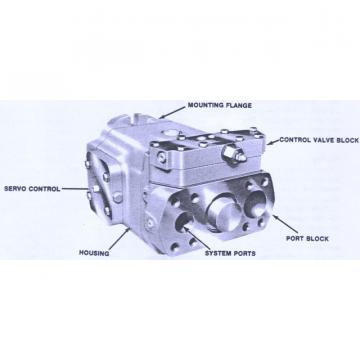 Dansion gold cup piston pump P30P-8L5E-9A4-A00-0B0
Dansion gold cup piston pump P30P-8L5E-9A4-A00-0B0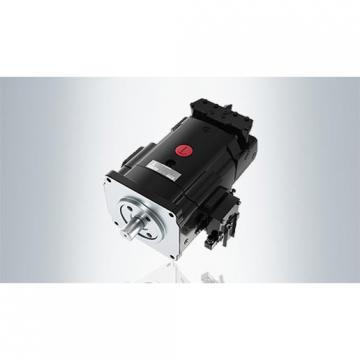 Dansion gold cup piston pump P30P-8L5E-9A2-B00-0C0
Dansion gold cup piston pump P30P-8L5E-9A2-B00-0C0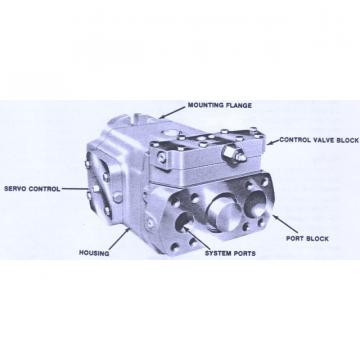 Dansion gold cup piston pump P30L-8L5E-9A7-A0X-B0
Dansion gold cup piston pump P30L-8L5E-9A7-A0X-B0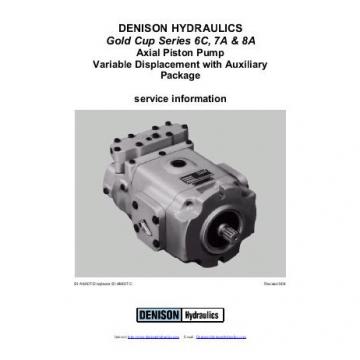 Dansion gold cup piston pump P30P-2R5E-9A7-B00-0C0
Dansion gold cup piston pump P30P-2R5E-9A7-B00-0C0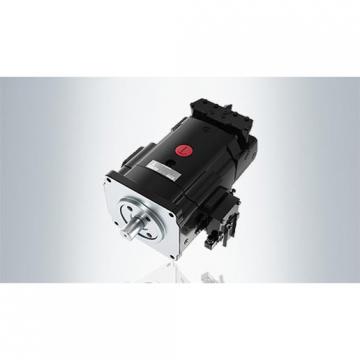 Dansion gold cup piston pump P30L-7R5E-9A2-A0X-D0
Dansion gold cup piston pump P30L-7R5E-9A2-A0X-D0